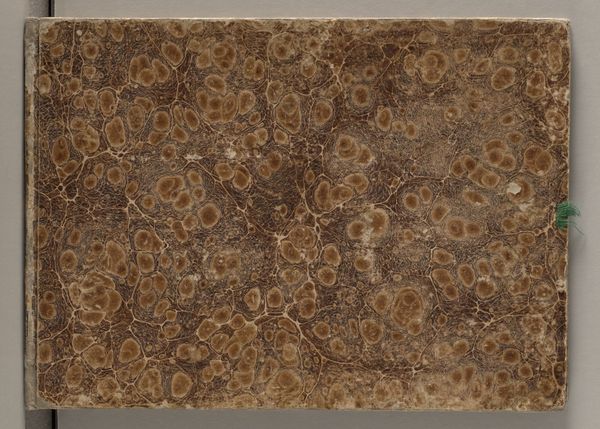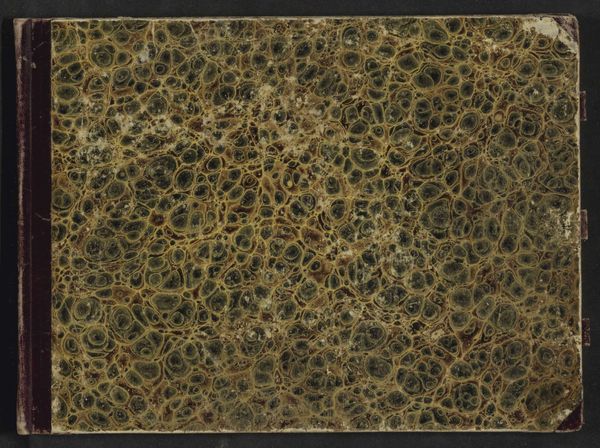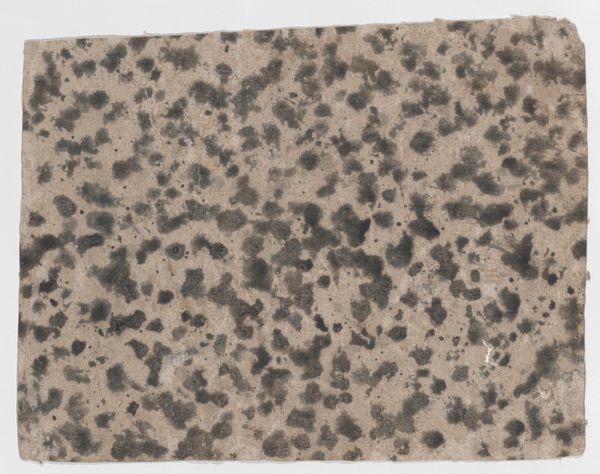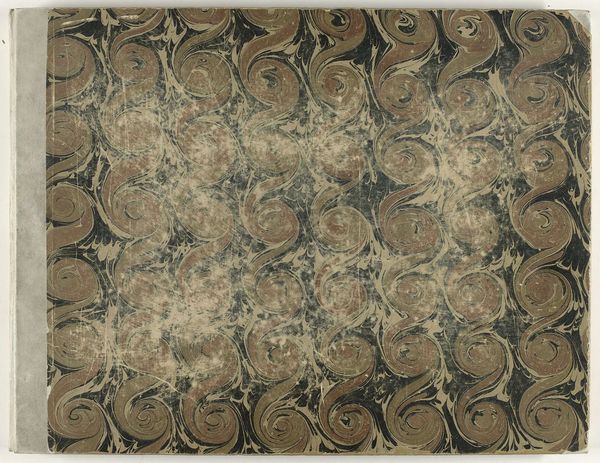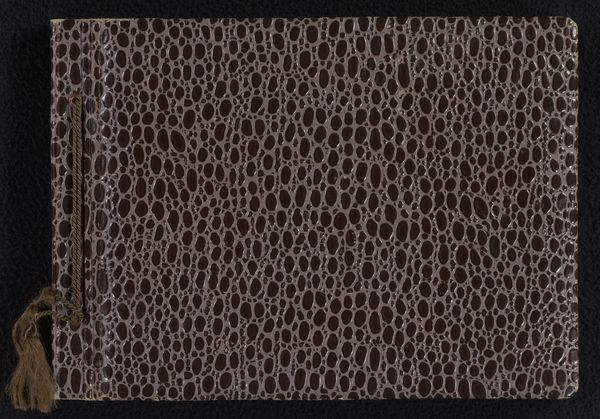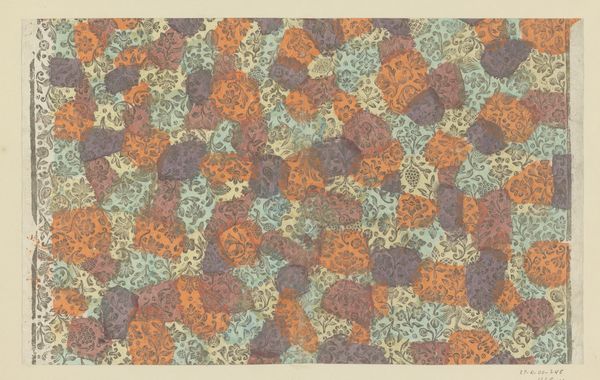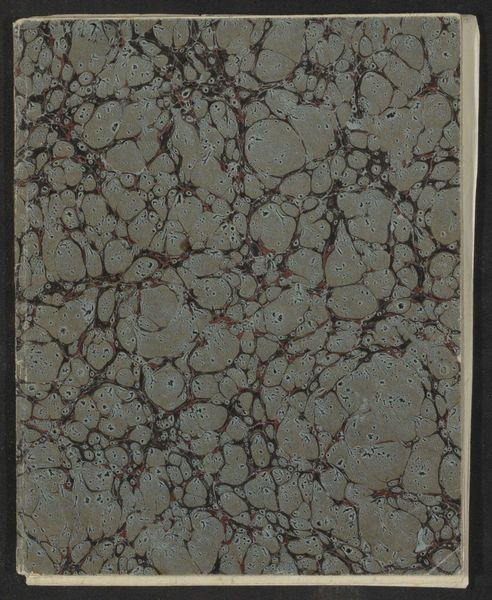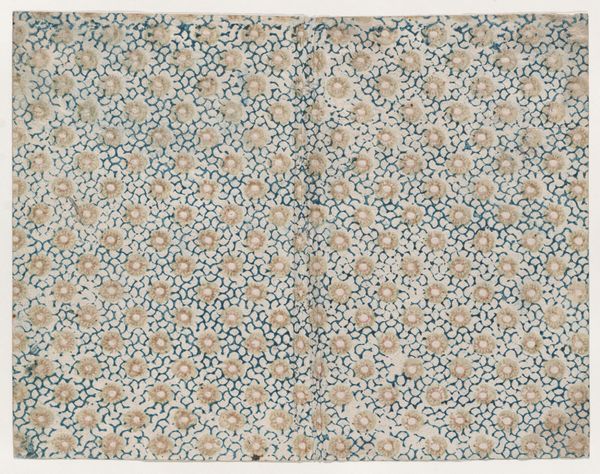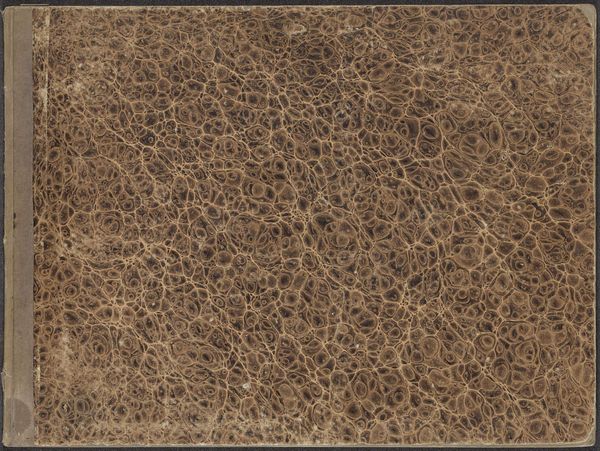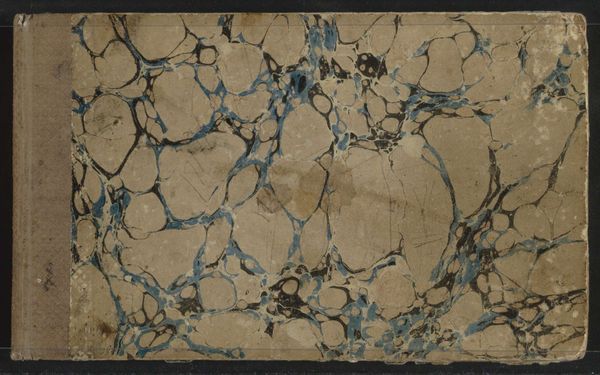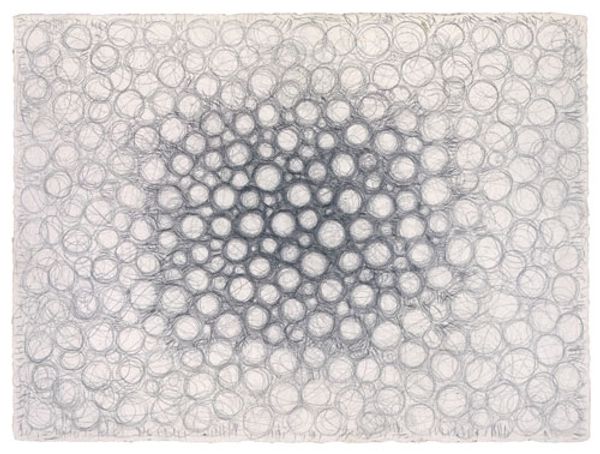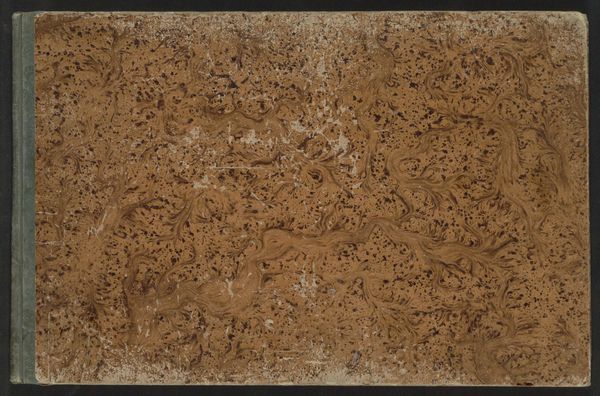
paper
#
16_19th-century
#
paper
Copyright: Public Domain
Curator: Here we have the cover of a "Skizzenbuch," or sketchbook, created by Friedrich Metz around 1839. It’s currently held at the Städel Museum. The materials consist of drawing and print on paper. Editor: It looks like some strange planetary chart, almost biological with all of those cell-like blobs in various shades of grey, and subtle hints of brown outlining them. Is that the artist's doing, or is that the paper itself? Curator: Well, that is what's fascinating. This aesthetic is known as decorative art, bordering on abstraction with elements of mannerism. Considering the production context, it pushes us to rethink hierarchies that elevate so-called fine art over "craft," especially during the rise of industrial bookbinding, as a field which became less bespoke over time. Editor: That's an interesting point. When we look at mass production versus individual artistry, particularly in this period, the conversation does move to socioeconomic factors around access to these sketchbooks—who used them, for what purpose, and what their status was at the time. The democratization of artmaking and knowledge-gathering are worth investigating in tandem. Curator: Exactly. Considering the Pattern and Decoration movement, this cover seems to revel in surface design, deliberately emphasizing a particular materiality of printing and potentially even waste of unused materials, depending on the printmaking practices of the era. There's a celebration of the "extra." Editor: I’m struck by the lack of clear imagery in it, that decorative choice, so let's focus on that pattern itself—the repeated shapes invoke ideas of cells and organisms which ties nicely to knowledge-seeking but also of control; there’s a certain surveillance quality in all of these scattered cell-like forms which begs many more questions. Curator: It's all about what that "extra" allows, beyond functionality, so in turn it provokes discussion around access, intention, use and how our perspective on "low" or "high" changes within specific socio-economic circumstances. Editor: Seeing this unique "Skizzenbuch" makes us aware of all these layers, even through something as seemingly utilitarian as a book cover. Thank you for your thoughts! Curator: Of course. This brings so many further points of artistic merit to light—something worth thinking more about.
Comments
No comments
Be the first to comment and join the conversation on the ultimate creative platform.
